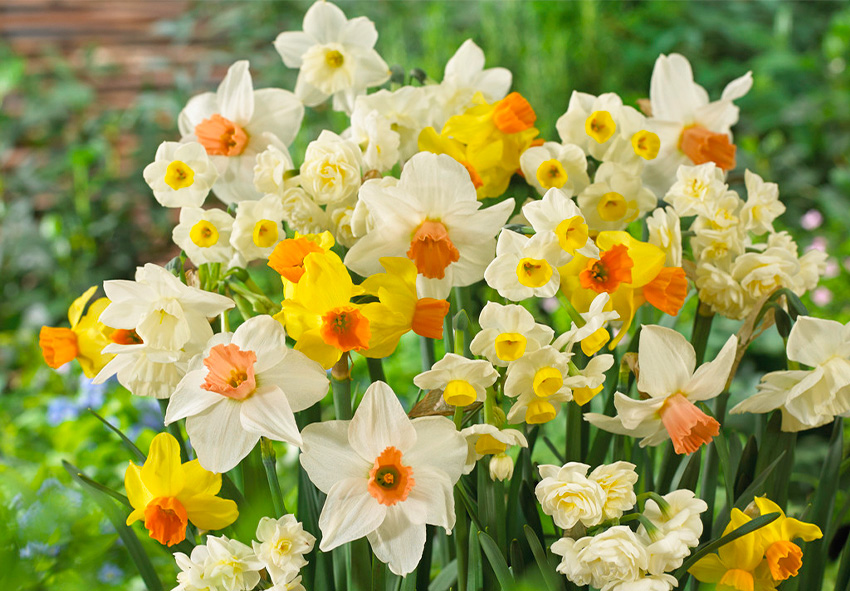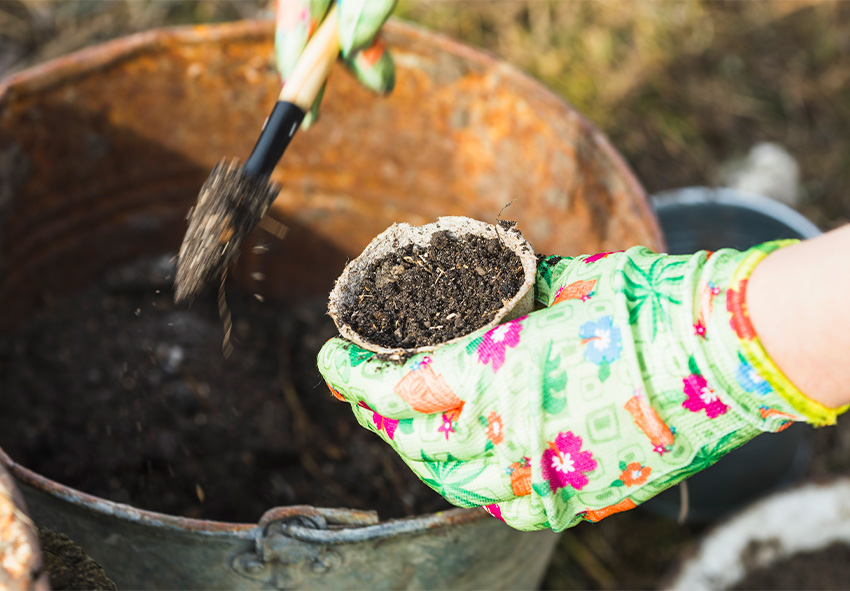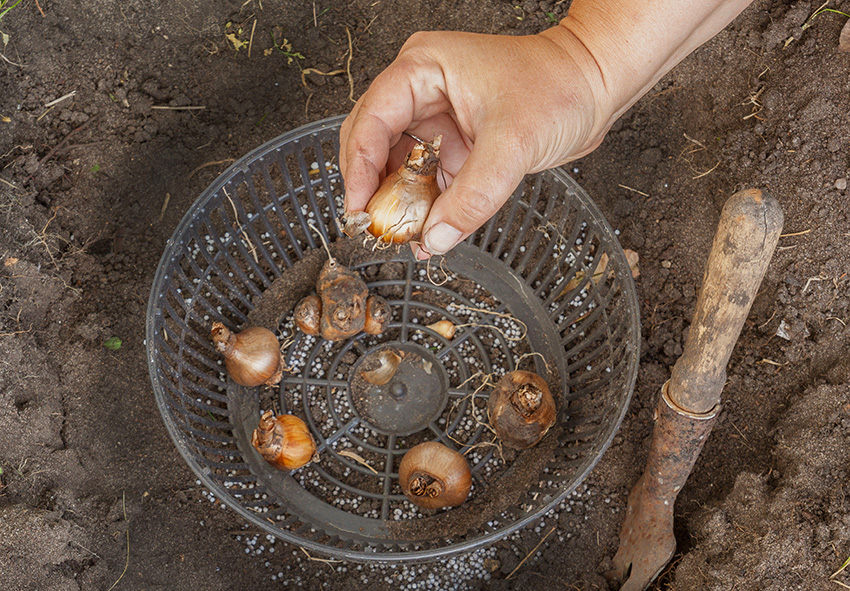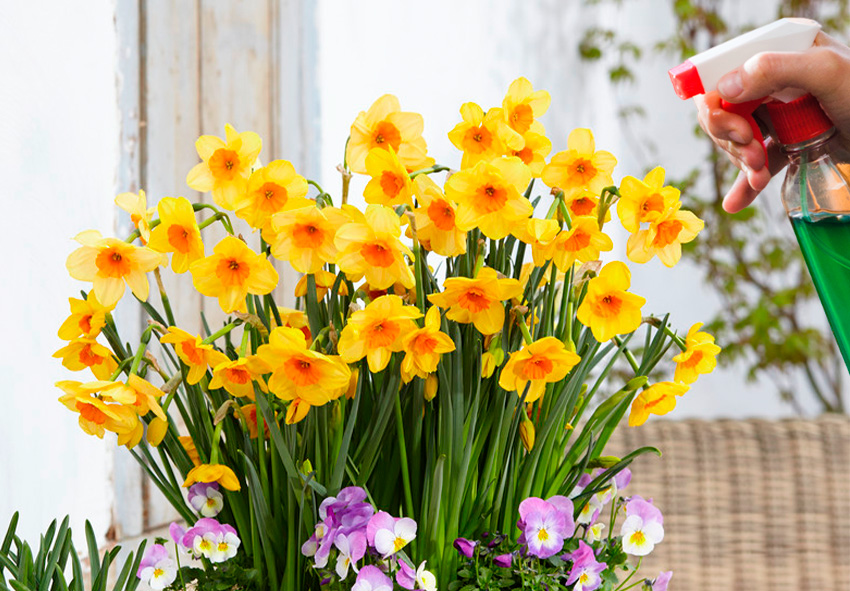Daffodils are a beloved spring flower, known for their bright yellow, white, and orange blooms that herald the end of winter and the arrival of warmer weather. These hardy, perennial bulbs are a fantastic addition to any garden, offering both aesthetic beauty and practical benefits. Our blog is a perfect place to find all the information about daffodils and other plants you need.
Why Plant Daffodils?
Daffodils are not only beautiful but also incredibly versatile and easy to grow. Their cheerful blooms can brighten up any garden space, making them a favorite among gardeners of all skill levels. Here are some key benefits of planting daffodils:
- Aesthetic Appeal: Daffodils are known for their vibrant colors and striking forms. They create a stunning visual display when planted in clusters or drifts, adding a splash of color to early spring gardens.
- Low Maintenance: Once planted, daffodils require minimal care. They are drought-tolerant, pest-resistant, and generally disease-free, making them an ideal choice for gardeners seeking low-maintenance plants.
- Naturalizing Ability: Daffodils are excellent for naturalizing, meaning they can spread and multiply over time, filling large areas with beautiful blooms without the need for replanting.
- Deer and Rodent Resistance: Unlike some other bulbs, daffodils are not favored by deer, squirrels, and other rodents, making them a reliable choice for gardens in areas with high wildlife activity.
Choosing the Right Location

Selecting the perfect location for planting daffodils is crucial for their healthy growth and vibrant blooms. Understanding their sunlight requirements, soil preferences, and space considerations will help ensure that your daffodils thrive in your garden.
Sunlight Requirements
Daffodils thrive best in full sunlight, which means they require at least six hours of direct sunlight each day. Plant daffodils in areas where they will receive full sun exposure. This will promote strong growth and abundant flowering. Daffodils can also tolerate partial shade, especially in warmer climates. If you live in an area with intense midday sun, planting them in a location that receives morning sun and afternoon shade can help prevent the flowers from scorching. Keep in mind that many trees and shrubs lose their leaves in the winter and early spring, providing more sunlight to areas that may be shaded during the summer months. This seasonal variation can be beneficial for daffodils planted under deciduous trees.
Space Considerations
Proper spacing is essential to ensure that daffodils have enough room to grow and that air circulates effectively, reducing the risk of disease:
- Bulb Spacing: When planting daffodil bulbs, space them about 6 inches (15 cm) apart. This allows each bulb enough room to grow without competing for nutrients and water.
- Depth of Planting: Plant daffodil bulbs at a depth of about 6 inches (15 cm). This depth provides stability and protects the bulbs from temperature fluctuations and pests.
- Air Circulation: Good air circulation is vital to prevent fungal diseases. Avoid overcrowding the bulbs and ensure there is adequate space around each plant for air to move freely.
- Group Planting: For a naturalized look, plant daffodils in clusters or drifts rather than single rows. This not only enhances the visual impact but also allows for better air circulation and growth.
By choosing the right location with appropriate sunlight, soil conditions, and spacing, you can create an ideal environment for your daffodils to flourish.
Preparing the Soil

Creating the right soil environment is crucial for the successful growth of daffodils. Proper soil preparation involves testing and amending the soil, as well as enriching it with essential nutrients.
Soil Testing and Amendments
Testing your soil is the first step to ensure that it has the proper pH and nutrient levels for daffodils. Begin by testing your soil’s pH level. Daffodils prefer a slightly acidic to neutral pH, ideally between 6.0 and 7.0. You can use a home soil test kit or send a sample to a local extension service for a more detailed analysis. If your soil pH is outside the ideal range, you can amend it. To raise the pH (make it more alkaline), add garden lime according to the package instructions. To lower the pH (make it more acidic), incorporate sulfur or peat moss into the soil. If your soil is heavy clay or sandy, improving its structure will benefit daffodils. For clay soils, add organic matter like compost or aged manure to enhance drainage and aeration. For sandy soils, add compost or well-rotted manure to increase moisture retention and nutrient content.
Adding Compost and Nutrients
Enhancing the fertility of your soil with organic materials is essential for the healthy growth of daffodils:
- Incorporating Compost: Adding compost to your soil improves its texture and nutrient content. Spread a 2-3 inch (5-7.5 cm) layer of compost over the planting area and mix it into the top 6-8 inches (15-20 cm) of soil. Compost enriches the soil with essential nutrients and helps retain moisture.
- Using Organic Matter: Other organic materials such as well-rotted manure, leaf mold, or aged grass clippings can also be beneficial. These materials add nutrients and improve soil structure, making it more conducive to root growth.
- Balanced Fertilizer: If your soil test indicates a need for additional nutrients, consider using a balanced fertilizer. A slow-release, granular fertilizer with a ratio of 10-10-10 (N-P-K) is often recommended. Apply the fertilizer according to the package directions, mixing it into the soil before planting.
- Avoiding Fresh Manure: While aged manure is beneficial, avoid using fresh manure as it can be too high in nitrogen and may burn the bulbs. Fresh manure can also introduce weed seeds and pathogens into the soil.
By thoroughly preparing your soil through testing, amending, and enriching it with organic materials, you create an optimal environment for your daffodils to thrive. Proper soil preparation ensures that the bulbs receive the necessary nutrients and conditions for healthy growth and stunning blooms.
Planting Daffodils

Planting daffodils properly is essential to ensure they thrive and produce beautiful blooms. This process involves selecting healthy plants, digging the right size hole, planting the bulbs correctly, and watering them appropriately.
- Choosing Healthy Plants
Select bulbs that are firm to the touch. Avoid any that feel soft, mushy, or have visible signs of rot or mold. Ensure the bulbs are free from cuts, bruises, or other physical damage. Damaged bulbs may not grow properly or could be susceptible to disease. Larger bulbs generally produce stronger plants with more blooms. While smaller bulbs are cheaper, investing in larger, high-quality bulbs will yield better results. Avoid bulbs that have already started to sprout, as they might have been stored improperly and may not establish well once planted.
- Digging the Planting Hole
Dig a hole that is about 6 inches (15 cm) deep. This depth is suitable for most daffodil bulbs and helps protect them from temperature fluctuations and pests. Ensure the hole is wide enough to accommodate the bulb comfortably. Generally, a diameter of about 3 inches (7.5 cm) is sufficient. Loosen the soil at the bottom of the hole to allow for better root penetration. Mix in a small amount of compost or a balanced fertilizer if needed.
- Planting Process
Place the bulb in the hole with the pointed end facing upwards. The roots should face downwards into the soil. Space the bulbs about 6 inches (15 cm) apart. This distance allows each plant enough room to grow without competing for nutrients and water. Gently cover the bulbs with soil, ensuring there are no air pockets around them. Lightly press down the soil to secure the bulbs in place. After planting, add a thin layer of mulch over the planting area to help retain moisture and regulate soil temperature.
- Watering After Planting
Water the newly planted bulbs thoroughly to settle the soil and eliminate air pockets. Ensure the water reaches the depth of the bulbs. Keep the soil consistently moist but not waterlogged. Daffodils need moisture to establish their roots, but too much water can cause bulb rot. Continue to monitor the soil moisture levels, especially during dry periods. Water the area regularly until the first frost to help the bulbs establish strong roots.
You can find even more useful information about when to plant daffodils in another article.
Mulching and Protecting Daffodils

Proper mulching and protection are vital for the health and success of your daffodils. Mulching helps retain moisture, suppress weeds, and insulate bulbs, while protecting from pests and diseases ensures vigorous growth and beautiful blooms.
Benefits of Mulching
Mulch helps maintain soil moisture by reducing evaporation. This is particularly beneficial during dry spells, as it ensures that the daffodil bulbs have a consistent supply of water. A layer of mulch acts as a barrier, preventing weed seeds from germinating and growing. This reduces competition for nutrients and water, allowing your daffodils to thrive. Mulch insulates the soil, keeping it cooler in the summer and warmer in the winter. This helps protect the bulbs from extreme temperature fluctuations. As organic mulch breaks down, it adds nutrients to the soil and improves its structure. This leads to healthier soil and better plant growth.
Types of Mulch to Use
Choosing the right type of mulch can make a significant difference in the health of your daffodils:
- Organic Mulches: These include materials such as shredded leaves, straw, pine needles, and composted bark. Organic mulches are beneficial because they decompose over time, adding organic matter to the soil.
- Compost: Well-rotted compost not only acts as mulch but also enriches the soil with nutrients. It is an excellent choice for daffodils, promoting healthy growth and vibrant blooms.
- Shredded Leaves: Easily available and cost-effective, shredded leaves provide excellent moisture retention and soil improvement as they decompose.
- Pine Needles: Pine needles are a good choice for daffodils as they break down slowly and provide good drainage while maintaining soil moisture.
- Straw: Straw is effective at weed suppression and moisture retention. Ensure that it is free from weed seeds to avoid introducing new weeds to your garden.
Conclusion
Planting daffodils in your garden not only enhances its beauty but also offers practical benefits such as low maintenance and natural resistance to pests. With their wide range of varieties, daffodils provide endless possibilities for creative garden designs. Look for more guidance about caring for daffodils after flowering and make this process even easier and more fun. So, why not add these cheerful blooms to your garden and enjoy the vibrant display they bring each spring?
Frequently Asked Questions (FAQs) about Planting Daffodils
1. When is the best time to plant daffodil bulbs?
The best time to plant daffodil bulbs is in the fall, typically from September to November, before the ground freezes. Planting during this period allows the bulbs to establish roots before winter, ensuring a vibrant display of flowers in the spring.
2. How deep should daffodil bulbs be planted?
Daffodil bulbs should be planted about 6 inches (15 cm) deep. The general rule of thumb is to plant them at a depth that is three times the height of the bulb. This depth helps protect the bulbs from temperature fluctuations and pests.
3. Can I Order Holland Daffodils in Your Online Store?
Yes! You can order daffodils from our online store Dutch-bulbs.com. We offer a wide variety of daffodil bulbs, including classic yellow varieties, fragrant types, and even unique color variations. Ordering online is convenient and allows you to browse through different options, select your preferred varieties, and have them delivered directly to your doorstep.
4. How much sunlight do daffodils need?
Daffodils prefer full sun to partial shade. They need at least 6 hours of direct sunlight daily for optimal growth and flowering. Planting daffodils in a sunny spot ensures they produce the best blooms.
5. How often should daffodils be watered after planting?
After planting, water the daffodil bulbs thoroughly to settle the soil and help them establish roots. Keep the soil consistently moist but not waterlogged. During dry periods in the fall and spring, ensure the bulbs receive about 1 inch (2.5 cm) of water per week. Reduce watering once the foliage starts to die back after flowering.
Published: 24.05.2024
